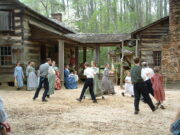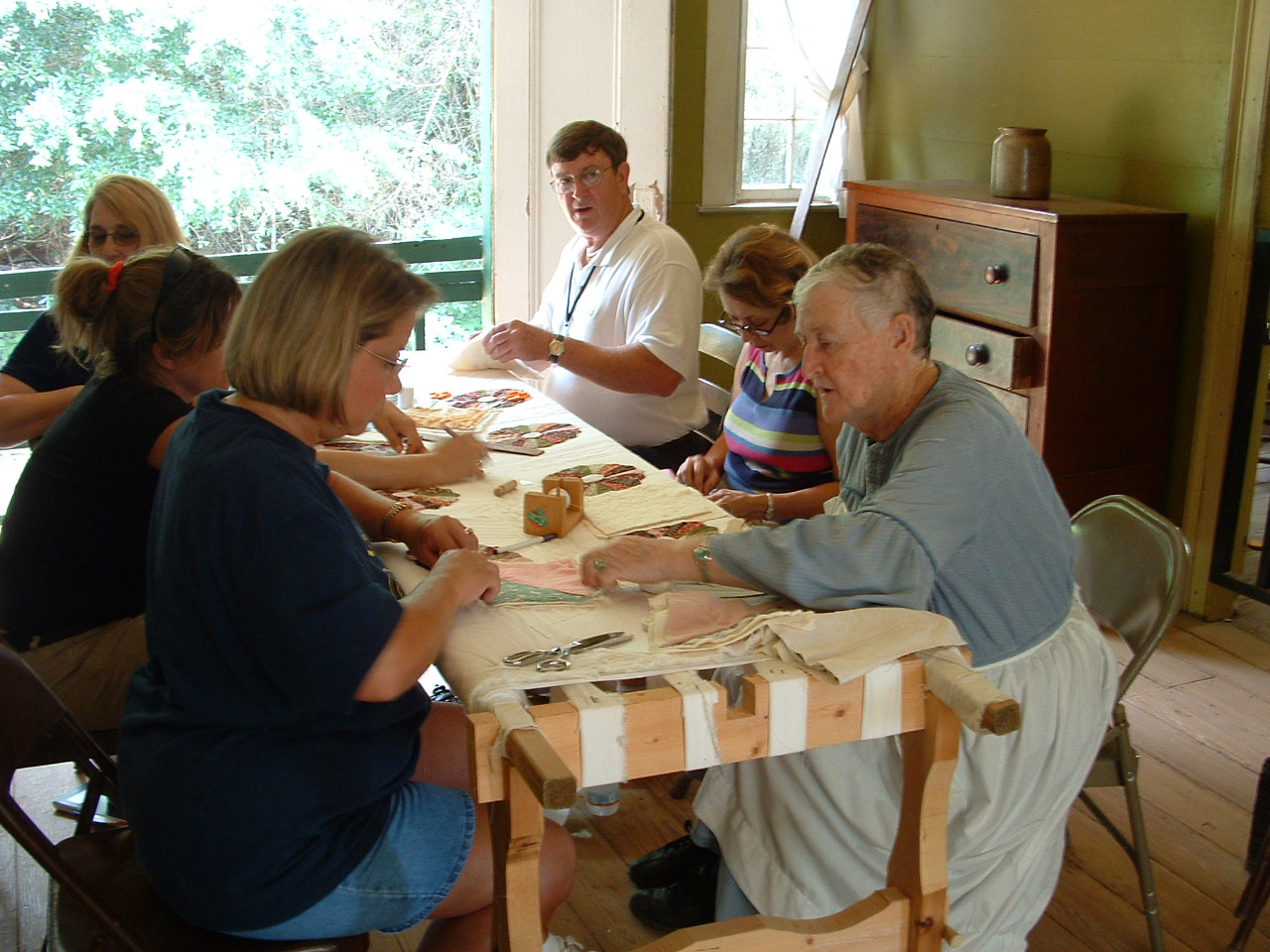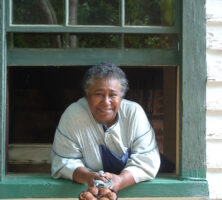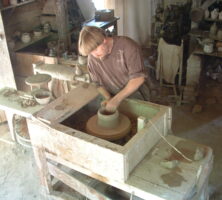Historic Westville is a living history museum that conserves both the material and the intangible culture of the nineteenth century. As the state’s earliest major experiment in living history, Westville’s interpretive strategy asks the visitor to “travel back in time” to the year 1850. Originally located in Lumpkin, in Stewart County, the site was eventually relocated to Columbus.
Westville conserves and perpetuates the work skills of antebellum west Georgia. Blacksmithing, split-white-oak basketmaking, cotton weaving, quilting, potting, hearth cooking, clothes washing, soapmaking, planting, animal-powered cotton ginning and baling, and cane syrup making are some of the work skills practiced for the public.
These activities take place against the backdrop of an antebellum town, which consists mostly of actual period buildings. These structures were rescued from destruction, moved to the site, and placed in a simulated environmental context to ensure historical accuracy.
The Beginning
A neglected museum in Jonesboro moved the founders of Westville Village to action in 1966. Called the Fair of 1850, the museum was the work of John Word West. A history teacher, West began in 1928 to collect various nineteenth-century buildings and artifacts, mostly from north Georgia.
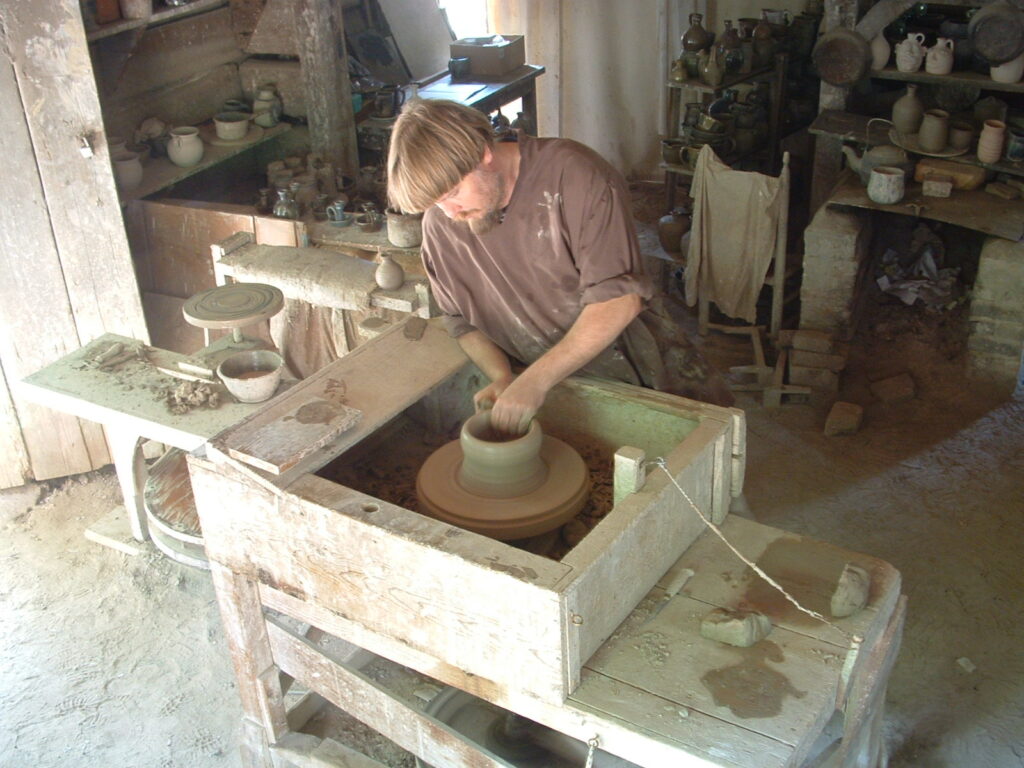
Courtesy of Historic Westville
West corresponded with oil tycoon and philanthropist John D. Rockefeller Jr., who had begun Colonial Williamsburg in Virginia about that time, and also with automotive pioneer Henry Ford, who founded Greenfield Village in Michigan. West’s motives of bringing history to life for posterity were similar but more regional. He wanted to preserve the Old South’s material and intangible cultures, which he felt were being obliterated by the move away from agrarian society.
Westville Village was founded after West’s death, in part to acquire and maintain West’s collection. Joseph B. Mahan Jr., curator of the Columbus Museum of Arts and Crafts (later the Columbus Museum), encouraged a group of volunteers in Stewart County to establish a living history museum. Mahan picked the location (between Columbus and Albany) because he felt the leadership there was already organized. In 1965 a group of local volunteers began Georgia’s earliest small-town effort in historic preservation by restoring an 1830s stagecoach hotel, the Bedingfield Inn, in Lumpkin. The volunteers then founded Westville Historic Handicrafts, Incorporated, in 1966. The founders consulted with staff from Old Sturbridge Village in Massachusetts, which had a similar mission and governance (private, nonprofit).
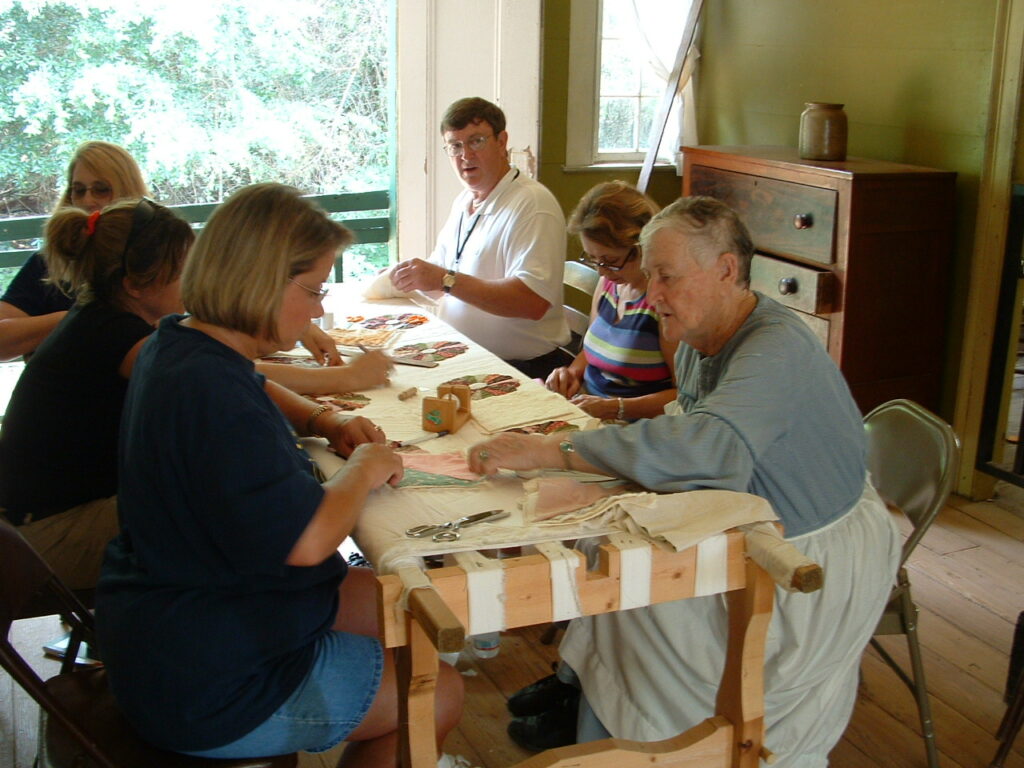
Courtesy of Historic Westville
Along with buying the Fair of 1850 for $25,000 in 1966, the Westville board began assembling a group of locally endangered antebellum buildings. Over the next four years an entire “village that never was” emerged on a donated site near Lumpkin. In 1967 roads were laid in a grid pattern, emulating a county seat much like nearby Lumpkin itself. A local home and the first of the West Collection buildings (the Yellow Creek Camp Meeting Tabernacle, originally at Cleveland, Georgia) arrived in January 1968. Governor Lester Maddox presided over the village’s formal founding on August 31, 1968.
Becoming a Reality
Westville came to life in 1969 through a federal grant to “change teacher behavior and teaching methods.” With a paid administrator and a crafts staff, the village opened for teacher workshops and school groups. It opened permanently for daily visitors in April 1970. Westville’s service to school groups became one of the living museum’s greatest successes. By 2003 about 625 schools sent children to Westville annually.
Nearly all of the buildings were in place by 1975. Of Westville’s thirty historical buildings and two reproductions, there are several of great importance. The Chattahoochee County Courthouse (1854) is one of two extant wooden courthouses in Georgia. The Bagley Cotton Gin (1845) and the Johnson Baling Press (1851), both of which are animal-powered, provide a rare glimpse into the cotton culture. Native Americans built one log room of the Wells House (ca. 1810).
Many of Westville’s furnishings were manufactured in the North, as was generally true in the antebellum period. However, many inland southerners did make and use their own furniture; Westville has perhaps the largest public display of Georgia-made antebellum furniture.
Although most of Westville’s activities are “third-person,” meaning that the costumed staff members do not pretend to be in the year 1850, some programs are “first-person,” in which a staffer portrays an 1850 character. Westville hosts numerous special events throughout the year. Festivals include dulcimer playing, storytelling, and fiddling. Seasonal activities include planting, May Day, harvesting, and the Yuletide season.
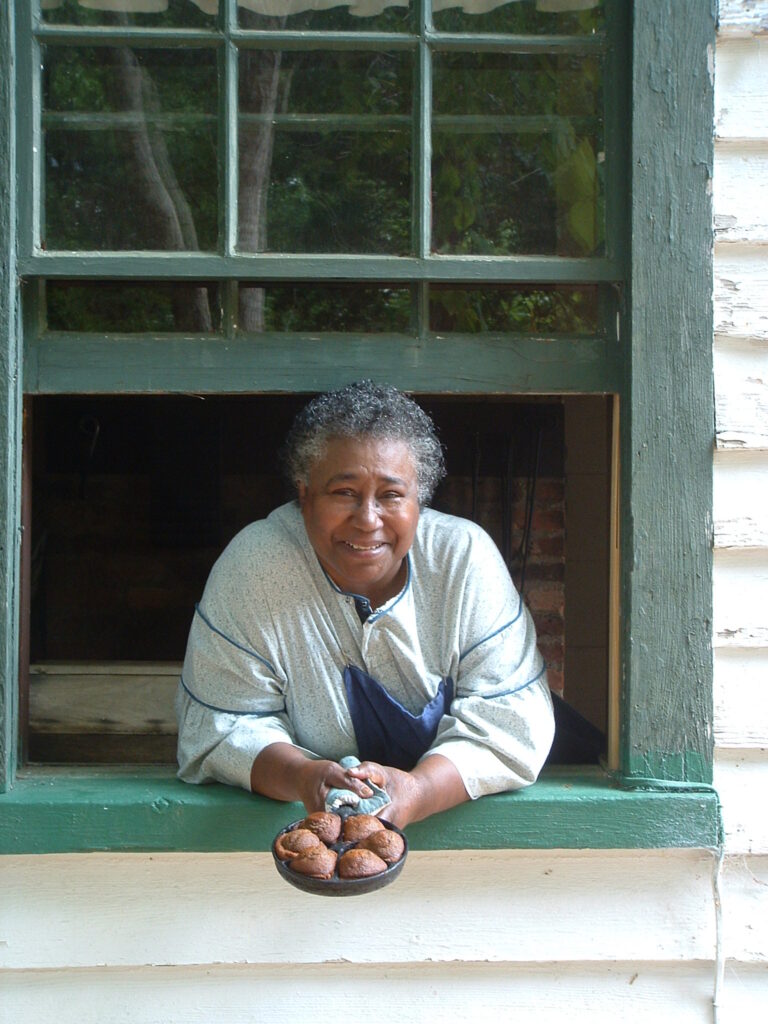
Courtesy of Historic Westville
In 1973 Westville revived blacksmithing by hosting a conference of traditionalists and academic professionals from around the country. The group founded the Artist-Blacksmiths Association of North America during the conference. ABANA is now the world’s largest blacksmithing association, with more than 5,000 members.
With its realistic historical appearance, Westville furnished a setting for scenes in several major movies, including a “James Gang” western called The Long Riders (1980) and Ken Burns’s The Civil War (1990). (Burns later decided to use only actual period images and cut the Westville footage.) In 1988 Westville won a Governor’s Award in the Humanities.
Throughout the early 2000s, Westville experienced declining ticket sales. In response, the board began to explore relocation to a more populated area. Following the donation of thirty-five acres near the Oxbow Meadows Environment Learning Center and National Infantry Museum in 2015, Westville announced that it would relocate to Columbus. The village closed shortly after to prepare for the move, and the first of its historic buildings were transported in 2017. After several weather and construction delays, the site reopened to the public in 2019.


